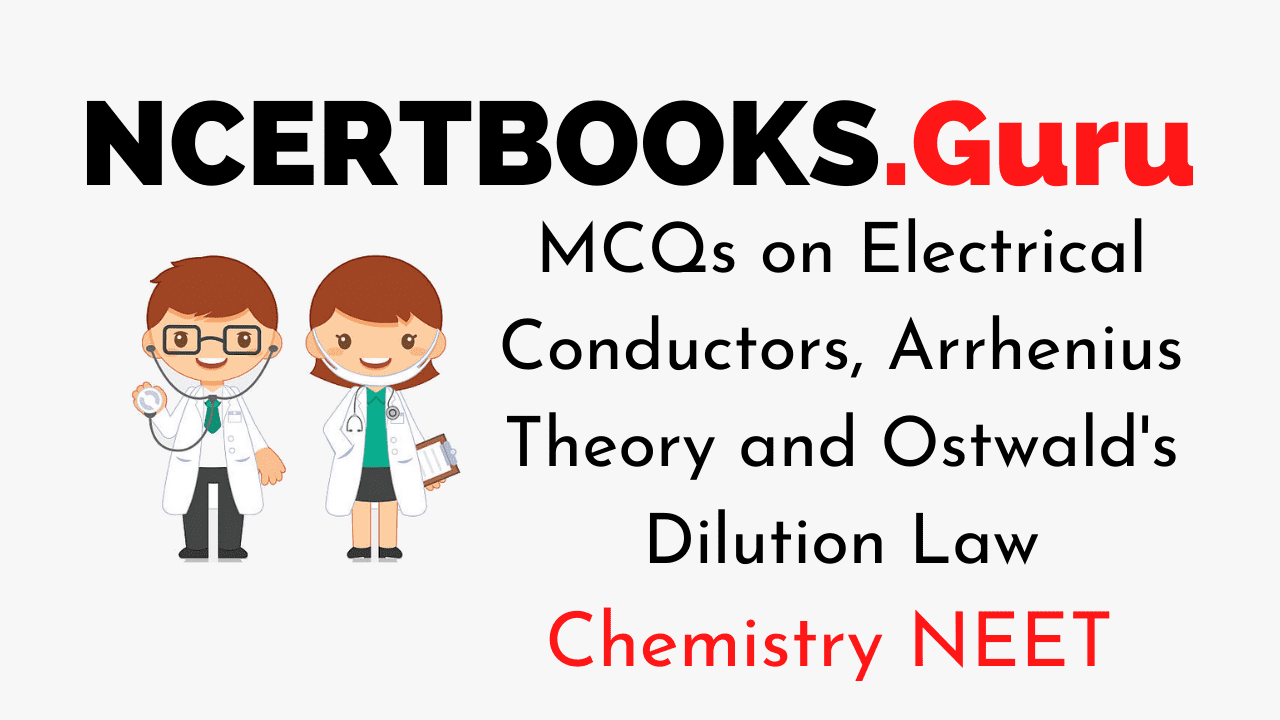NEET Chemistry is the scoring paper in the medical entrance examination. Here, you will discover the NEET Chemistry MCQ Questions for all Concepts as per the latest syllabus. Practice more on a regular basis with these NEET Chemistry objective questions on air pollution and improve your subject knowledge & problem-solving skills along with time management. NEET Chemistry Electrical Conductors, Arrhenius Theory and Ostwald’s Dilution Law Multiple Choice Questions make you feel confident in answering the question in the exam & increases your scores to high.
MCQs on Electrical Conductors, Arrhenius Theory and Ostwald’s Dilution Law
1. If a conductor length is increased, 100% then keeping all other parameters fixed, what will be the increase in power dissipate?
(a) 100%
(b) 200%
(c) 300%
(d) 400%
Answer
Answer: (b)
2. What happens to the conductivity of semiconductors when there is an increase in temperature?
(a) decrease
(b) increase
(c) first, increase and then decrease
(d) remains constant
Answer
Answer: (b)
3. Semiconductors have electrical conductivity
(a) more than metals but less than insulators
(b) less than thermistor but more than an insulator
(c) equal to the thermistor
(d) less than metals but more than typical insulators
Answer
Answer: (d)
4. When temperature increases the conductance of conductors is
(a) decrease
(b) increase
(c) first, increase and then decrease
(d) remains constant
Answer
Answer: (a)
5. When acids dissolve in water it releases
(a) H+ ion
(b) H– ion
(c) H3O+ ion
(d) H3O2+ ion
Answer
Answer: (a)
6. Which element is always present in Arrhenius acid
(a) oxygen
(b) nitrogen
(c) hydrogen
(d) none of the above
Answer
Answer: (c)
7. Ostwald’s dilution law is applicable to
(a) strong electrolytes only
(b) weak electrolytes only
(c) non-electrolytes
(d) strong as well as weak electrolytes
Answer
Answer: (b)
8. In the titration of iodine against hype the indicator used is
(a) starch
(b) potassium ferricyanide
(c) methyl orange
(d) methyl red
Answer
Answer: (a)
9. According to Ostwald’s dilution law:
Answer
Answer: (b)
10. One litre of 0.5M KCl solution is electrolysed for one minute in a current of 16.08 mA. Considering 100% efficiency, the pH of the resulting solution will be
(a) 7
(b) 9
(c) 8
(d) 10
Answer
Answer: (c)
